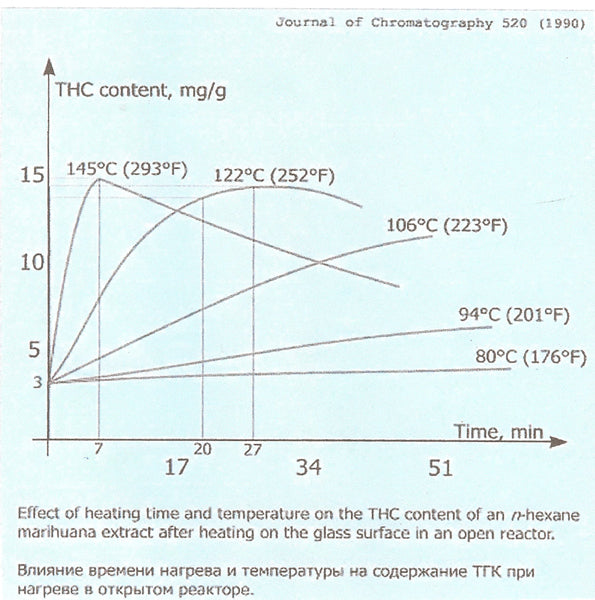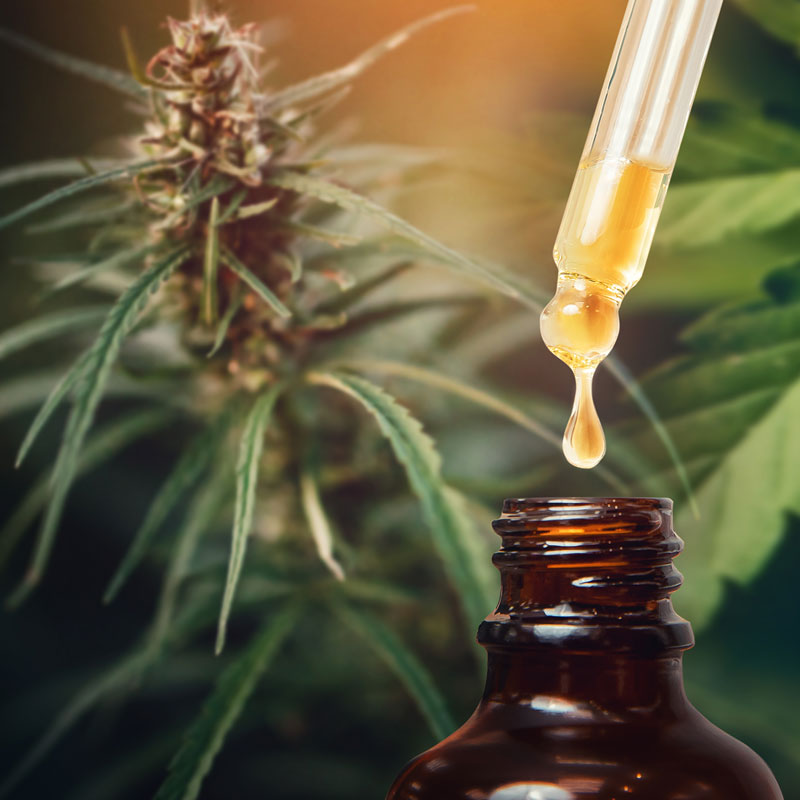How to Decarboxylate Cannabis Concentrate
Why Decarboxylating Cannabis Concentrate is Preferred Over Flower
Decarbing cannabis concentrate instead of flower offers several advantages, making it my preferred method for activation.
✅ Greater Flexibility in Use – Decarboxylating the concentrate allows access to both acidic and activated cannabinoids. While THC-A and CBD-A have their own unique therapeutic benefits, decarbing converts them into THC and CBD, unlocking their full psychoactive and medicinal potential.
✅ Easier Temperature Control – Working with smaller batches of concentrate allows for more precise temperature control and requires less equipment compared to decarbing large amounts of plant material.
✅ Visible Indicators of Completion – Unlike cannabis flower, which leaves a lot of guesswork about whether decarboxylation is complete, concentrates give a clear visual cue. As the concentrate heats, bubbles form as carbon dioxide is released—this is the “carb” in decarbing. Once the bubbling stops, the process is complete, ensuring fully activated cannabinoids without the risk of over- or under-decarbing.
For those looking for accuracy and efficiency, decarbing cannabis concentrate with proper temperature control is the superior method compared to using flower or trim.
How to Decarboxylate Cannabis Concentrate
Decarboxylating cannabis concentrate follows a slightly different process than decarbing flower. The biggest advantage of working with concentrates is the visual indicator—bubbles forming and then stopping—which tells you exactly when the process is complete. Follow these step-by-step instructions for a successful decarb.
1. Prepare Your Concentrate
Before beginning, ensure you have properly prepared cannabis concentrate. If you are starting with fresh cannabis, use the cold air evaporation method to make concentrate from a 200 proof food grade ethanol tincture.
2. Set Up Your Baking Dish
Place your cannabis concentrate in an oven-safe silicone cup, on a tray lined with a Teflon sheet, or in a glass baking dish.
- Why silicone or Teflon? These materials prevent the sticky concentrate from adhering to the baking dish and make cleanup easier.
- Using glass? While glass can be used, be aware that once cooled, the concentrate will harden and require scraping with a razor blade or chisel for removal. If left too long, it may become difficult to extract cleanly and require additional cleanup.
- Avoid parchment paper, as it may not withstand prolonged exposure to high temperatures.
3. Preheat and Verify Oven Temperature
Set your oven to 275°F (135°C) and allow it to fully preheat. Do not skip this step—accurate temperature control is crucial for a successful decarb.
- Use an oven thermometer to confirm the actual internal temperature of your oven. Many ovens run hotter or cooler than their settings indicate.
- If working with small batches, consider using a toaster oven placed outdoors or in a well-ventilated space to help mitigate strong cannabis odors.
- If using a kitchen oven, place a baking stone or an extra baking sheet on the lower rack to help stabilize temperature fluctuations.
4. Heat the Concentrate
Once the oven is fully preheated, carefully place the dish with your cannabis concentrate on the middle rack of the oven.
5. Watch for Bubbles (the Key Indicator of Decarboxylation)
Unlike cannabis flower, which has no obvious sign of when it’s fully decarbed, concentrate provides a visual cue—bubbles.
- As the concentrate heats, bubbles will begin forming—this is the CO₂ being released as the cannabinoids convert from their acidic forms (THC-A or CBD-A) to their activated forms (THC or CBD).
- Stir occasionally using a toothpick, bamboo skewer, or chopstick to ensure even heating and to prevent any uneven decarb.
- Why use wood? The sticky resin will adhere to metal or plastic tools, making them difficult to clean. Wood can simply be discarded after use.
6. Know When It’s Done
The decarboxylation process is complete when bubbling slows and then stops. This typically takes 30-40 minutes, depending on the amount of concentrate and the oven’s temperature stability.
- Why do bubbles stop? Once all of the acid groups (carboxyl groups) have been removed, no more CO₂ is being released, meaning the conversion process is finished.
- Overcooking will not improve potency—it may degrade cannabinoids and terpenes, so remove the concentrate as soon as bubbling ceases.
7. Cool and Store
Carefully remove the dish from the oven and let the concentrate cool completely before handling.
- If using glass, remove the concentrate before it hardens completely to make cleanup easier. If it solidifies, you may need to carefully warm it slightly before scraping.
- Store the decarbed concentrate in a sealed glass jar or syringe for easy dosing.
- Keep in a cool, dark place to preserve potency, or refrigerate for long-term storage.
Once fully decarbed, your concentrate is ready to use in tinctures, edibles, topicals, or vaporization!












